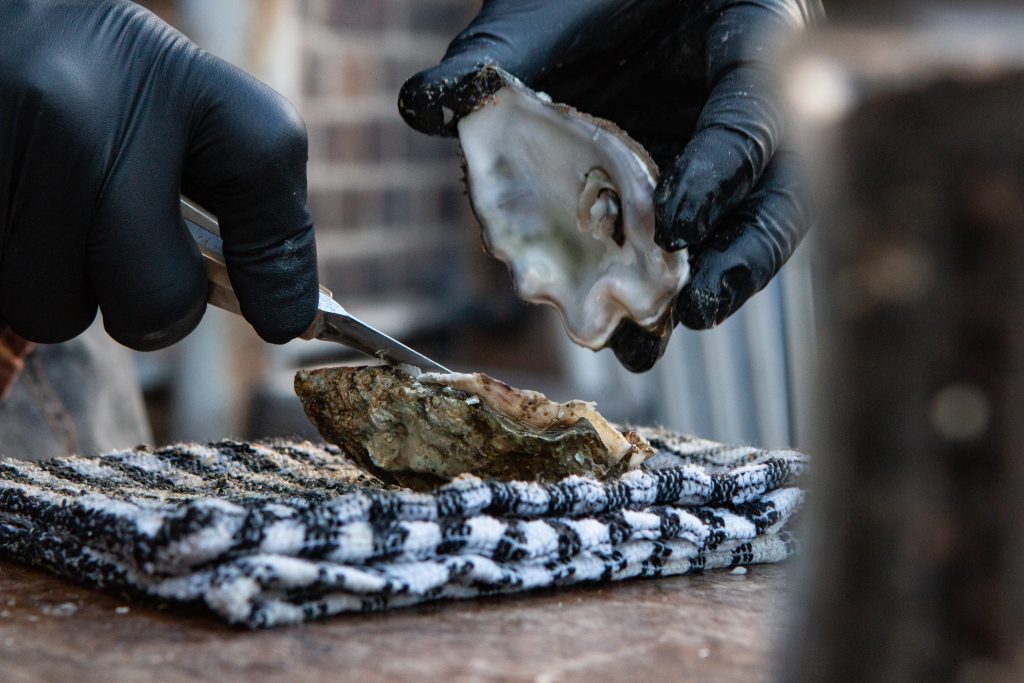All fields are required
Posted in Our Blog,Outbreaks & Recalls,Vibrio on August 16, 2023

The Connecticut Department of Health (DPH) issued a Press Release on July 28, 2023, warning residents about a severe Vibrio infection outbreak detected in the state that has sickened at least 3 and caused 1 death so far.
According to the report, 3 cases of Vibrio vulnificus infection have been reported to DPH since July 1, 2023. All three patients were between the ages of 60 and 80 years. All three patients were hospitalized. One died.
The common link seems to be consuming raw shellfish and exposure to salt or brackish water along the Long Island Sound.
According to reports, one patient indicated consuming raw oysters from an out-of-state establishment. The other two patients had pre-existing open cuts or wounds or sustained new wounds, leaving them susceptible to infections.
“The identification of these severe cases, including one fatality, due to V. vulnificus is concerning. People should consider the potential risk of consuming raw oysters and exposure to salt or brackish water and take appropriate precautions. Particularly during the hottest months of the summer, bacteria are more likely to overgrow and contaminate raw shellfish. Given our current heat wave, this may be a time to exercise particular caution in what you consume.”
DPH Commissioner Manisha Juthani, MD
The Center for Disease Control and Prevention (CDC) estimates that vibriosis, the illness associated with Vibrio infection, causes 80,000 illnesses in the United States each year. Most of these (around 52,000) are estimated to be associated with eating a contaminated food. About 80% of Vibrio infections occur when water temperatures are warmer. Generally, this falls between the months of May and October.
Vibrio vulnificus is just one strain of Vibrio bacteria that can cause illness in humans.
While rare, this type of infection is extremely serious. An infected wound could lead to serious blood stream infections requiring intensive care or limb amputation. About 1 in five people with V. vulnificus infection die. The elderly and those with a weakened immune system are at greatest risk for serious illness, but there are other susceptible groups as well.
Anyone can become sick from Vibrio exposure, but certain groups are at higher risk of complications. People with certain health conditions such as liver disease, cancer, diabetes, HIV, thalassemia, or had part of the stomach removed are at greater risk. As are those taking certain medications such as those to decrease stomach acid levels or people receiving immune-suppressing therapy.
Avoidance is the best policy when it comes to Vibrio exposure. There are several ways to reduce your chance of getting a Vibrio infection. These small precautions can go a long way.
Cooking oysters and other shellfish can kill the harmful bacteria potentially lurking inside. Eating them raw or undercooked can allow that bacteria to enter your body and cause infection.
If you have a wound, whether from a sore, cut, recent surgery, piercing, or even tattoo, stay out of saltwater or brackish water. This even includes wading that the beach or hanging out by the shore of a river.
Cover any wound with a waterproof bandage if there is a chance that it may come into contact with saltwater, brackish water, or marine life. This precaution is also a good idea if you are in contact with raw or undercooked seafood and its juices in such situations as cooking or preparing the product.
If you happen to come in contact with saltwater, brackish water, marine life, raw seafood, or its juices, be sure to thoroughly wash the wounds with soap and water.
Could the recent Vibrio infection cases be happenstance exposure in the warm brackish waters of the Long Island Sound, or are there other overlapping factors linking these patients? Connecticut DPH continues to investigate.
Symptoms will vary based on the type of exposure. Ingested Vibrio infection presents very different symptoms to that of wound exposure.
Symptoms of ingested Vibrio vulnificus often begin within 24 hours and generally last about 3 days. A key trait of infection is watery diarrhea that is accompanied by abdominal cramping, nausea, vomiting, fever, and/or chills. In more susceptible cases, such as those with a weakened immune system, illness can be more severe.
Symptoms of vibrio vulnificus wound exposure often include large, spreading blisters, sepsis, and shock. Symptoms generally appear quickly and become fatal within a day or two of becoming ill.
This type of illness is often referred to as necrotizing fasciitis, or what is more commonly called “flesh-eating bacteria. Vibrio vulnificus bacteria is not the only type of bacteria that can cause this type of illness where the flesh around an open wound dies.
Vibrio infection is diagnosed through laboratory tests. Common samples include wound swabs, blood, or stool samples of the sick individual. These samples are screened and analyzed for growth on specific culture media. Growth indicates a positive result. Further testing is necessary to determine the exact strain.
For ingestion exposure, mild cases may not require treatment. The patient is advised to drink plenty of liquids to replace those lost through diarrheal symptoms. In severe or prolonged illness, antibiotic treatment may be prescribed.
For wound exposure, treatment may range from removing the dead tissue from around the wound to amputating the affected limb to prevent further spread throughout the body.
If you believe you have been exposed to Vibrio vulnificus, you should seek medical attention immediately. You do not want to incorrectly assume you will have a mild case, particularly if you have experienced wound exposure and have symptoms of necrotizing fasciitis.
There are a few other activities that can help investigators determine a source.
By: Heather Van Tassell